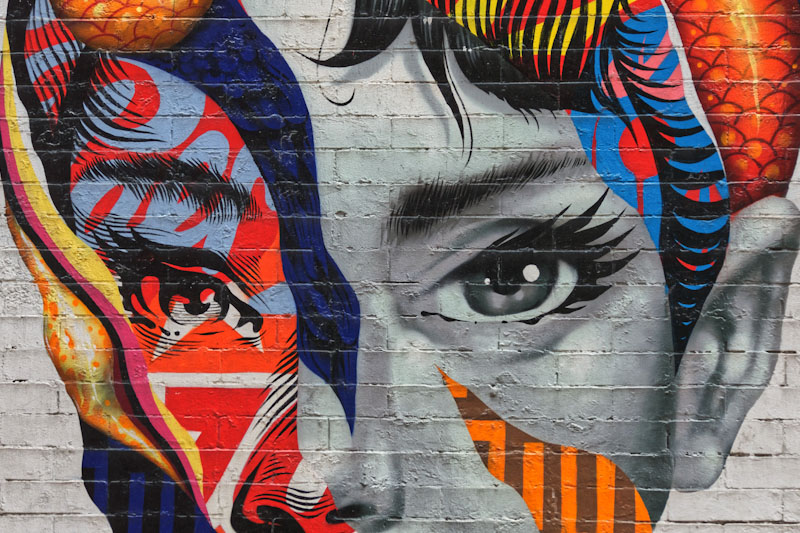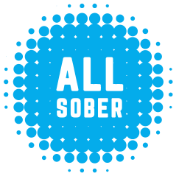What Is Substance Use Disorder?
It may sound a bit clinical to your ear at first, but the term is incredibly helpful in understanding the broad spectrum of experiences people have when drugs and alcohol harm them. Here's what it means

It’s not some new scientific debate: “What do we call ‘having a problem with drugs and alcohol’?” is a question that has existed since people started having problems with drugs and alcohol. Even Shakespeare tried some phrases. The beloved scoundrel Falstaff in “Henry IV” is told by his own tavern buddy that everyone thinks he’s a “stuffed cloak-bag of guts” and “huge bombard of sack” (sack is Sherry wine). In “Othello,” the soldier Cassio curses his alcohol-driven “infirmity”: “Every inordinate cup is unblessed.”
While the insults are old (and rude!), Shakespeare portrayed his characters’ relationship with alcohol in a fairly modern way. For them, it’s complicated. It may be a problem, but it’s difficult to figure out how it got that way; it causes health ailments, emotional conflict and social consequences, but it’s awfully hard to quit. It’s that same complexity that has led today’s doctors toward thinking about the harm caused by drug and alcohol use as a collection of wide-ranging physical, mental, behavioral and social symptoms, now encompassed in the term “substance use disorder,” or SUD.
According to the National Institute on Drug Abuse (NIDA), 40.3 million Americans had a substance use disorder in 2020, the most recent year of available data.
What Are the Criteria for Substance Use Disorder?
The Substance Abuse and Mental Health Services Administration (SAMHSA), a branch of the U.S. Department of Health and Human Services, works with this definition:
“Substance use disorders occur when the recurrent use of alcohol and/or drugs causes clinically significant impairment, including health problems, disability and failure to meet major responsibilities at work, school or home.”
A more detailed set of criteria appears in the American Psychiatric Association’s “Diagnostic and Statistical Manual of Mental Disorders, Fifth Edition,” better known as the DSM-5, widely considered the authority on mental health definitions and diagnoses. The DSM-5 and its outline of SUDs was published in 2013, with a revision in 2022. It lists 11 criteria for an SUD diagnosis, three levels of severity and 10 types of drugs that can cause substance-related disorders.
Let’s look at the criteria:
Impaired control:
-
- Substance is often taken in larger amounts or over a longer period than was intended
- There is a persistent desire or unsuccessful efforts to cut down or control substance use
- A great deal of time is spent in activities necessary to obtain the substance, use the substance or recover from its effects
- Craving, or a strong desire or urge to use the substance
Risky use of substance:
-
- Recurrent substance use in situations in which it is physically hazardous
- Substance use is continued despite knowledge of having a persistent or recurrent physical or psychological problem that is likely to have been caused or exacerbated by the substance
Social impairment:
-
- Recurrent substance use resulting in a failure to fulfill major role obligations at work, school or home
- Continued substance use despite having persistent or recurrent social or interpersonal problems caused or exacerbated by the effects of the substance
- Important social, occupational or recreational activities are given up or reduced because of substance use
Pharmacological criteria:
-
- Tolerance, as defined by either: a need for markedly increased amounts of the substance to achieve intoxication or desired effect OR markedly diminished effect with continued use of the same amount of the substance
- Withdrawal, as manifested by either: the characteristic withdrawal syndrome for the substance OR the substance (or a closely related substance) is taken to relieve or avoid withdrawal symptoms
As you can tell, this is not an arbitrary list. There is no hard threshold for quantities of substance used, nor do the words “addiction” or “dependence” appear; that is intentional. “Craving” is an addition to an older set of DSM criteria, while “legal problems” was dropped in this edition. The authors that put together the DSM-5 criteria showed their work in an article published at the same time as the manual, if you’re interested in reading about the back-and-forth behind the scenes that made “substance use disorder” what it is today.

What Are the Different Types of Substance Use Disorder?
Alcohol use disorder (AUD) and opioid use disorder (OUD) are perhaps the best known, but tobacco, cannabis, stimulants (cocaine, amphetamines, etc.), hallucinogens, sedatives/hypnotics/anxiolytics (benzodiazepines, barbiturates), inhalants and “other (or unknown)” can also be the S in SUD. (“Caffeine use disorder” is acknowledged in the DSM-5 but remains under study — meaning, is it a significant, diagnosable SUD?)
Some people may have more than one substance use disorder, while others may have a substance use disorder in tandem with another mental health disorder such as depression, anxiety or bipolar disorder. Together, these are called co-occurring disorders.
Are There Levels of Substance Use Disorder?
According to the DSM-5, if you are assessed as having any two or three of the above criteria, you may have a “mild” SUD. Four to five is “moderate.” Six or more is “severe.”
That means if you frequently use more than you meant to, drive under the influence, lose interest in your hobbies, fight with your partner and lie to your boss, count the hours until you can clock out and go to the bar, and use more than you once did to get to the same place, you may have a severe substance use disorder — without ever seeing the inside of a hospital ward or jail cell. The bottom line is substance use disorder looks different for each individual, and many people, including the one using, may not see it at all.
But if you have concerns, let a licensed mental health professional perform the screening.
Is Substance Use Disorder the Same Thing as Addiction?
It depends on whom you ask. Doctors and other experts have argued that a suite of symptoms that may or may not be in the DSM could be considered addiction. The chapter in the DSM-5 that covers SUD is titled “Substance-Related and Addictive Disorders” because it also includes gambling disorder, but the authors had originally chosen to omit the word “addiction” entirely. An added point of complication without consensus was not helpful, they felt.
The International Classification of Diseases (ICD-11) is the World Health Organization’s big database of maladies, another major diagnostic manual for medical professionals. The ICD prefers a medical diagnosis of “use” or “dependence” to “addiction.”
The ongoing debate over what “addiction” means is part of the reason the term “substance use disorder” exists in the first place. But if you’re trying to figure out if you have an addiction problem or need addiction treatment, that answer doesn’t do you much good.
So if you find it useful to really wrap your arms around a framework of addiction, you can take it from the Addiction Policy Forum: A “severe” substance use disorder — six or more of the 11 DSM criteria — equals addiction.
What Happened to ‘Alcoholics’ and ‘Drug Addicts’?
If you’ve suffered from addiction, you may think “substance use disorder” doesn’t quite capture the pain, destruction and loss you’ve been through.
After the fistfights, the blackouts, the smashed furniture, the divorce, the sweat-drenched nights in detox and on and on, can’t you at least call yourself an alcoholic instead of a clunky phrase like “person who engaged in unhealthy/hazardous alcohol use”? And hey, aren’t you supposed to admit to being an alcoholic or addict in 12-step recovery programs?
First of all, yes, you can call yourself whatever you like if it helps your recovery. “Alcoholic” and “addict” are indeed widely used in both the mainstream culture and certain recovery groups. The definitions of substance use disorder are not an attempt by the language police to deny you harsh or impolite words that help you make sense of what’s going on with you.
But it’s worth considering that addiction provokes strong feelings of shame, guilt and stigmatization. Some of these things you’ll have to work through with your counselor or support group, but stigma comes from outside, and it’s often spread through language. Stigma blames people for their addictions; it suggests you are broken, irredeemable or even dangerous, and it gives oxygen to the lies that addiction isn’t treatable and recovery isn’t possible. More alarming, stigma discourages people from seeking treatment (“I’m not a drug addict”) and discourages others — friends, employers, policymakers — from offering compassion and understanding. It’s worth reflecting on the words you use when talking about addiction. Do the bad old stereotypes really help you come to terms with it, and at what cost?
NIDA has a simple, handy set of guidelines if you want to communicate in a more positive and empowering way. Try thinking of people “with a substance use disorder” (or alcohol or opioid use disorder) who have a problem, instead of “addicts,” “alcoholics,” “drunks,” “drug abusers” and “junkies” who are the problem. Avoid “habit” and “abuse,” or describing a “dirty” drug test or even a “clean” one.
You may roll your eyes at these suggestions at first, but leading by example is a powerful way to help society view people with an SUD as people, full stop, and to help those people to feel more open to getting help.
At All Sober we strive to be a resource not just for understanding substance use disorder, but also for helping people find treatment and make recovery plans. Search our comprehensive database of treatment centers, and learn more about living sober.
More Help & Information
Does the 'Pink Cloud' of New Sobriety Help or Hurt? It's Complicated
The euphoria of early recovery may be fleeting, but long-lasting balance is the goal. Here's how to keep your head up through the process and handle reality with confidence.
Sobriety vs. Recovery: What's the Difference?
Are the concepts themselves up for debate? Do they require certain treatments, or abstinence from everything? It's complicated! And new ways of thinking are changing the conversation.
Now Elite NFL Players, They First Tackled Addiction | News Roundup
All Sober compiles the best of the latest headlines. Here's your addiction and recovery news for the week of Feb. 19, 2024!
Help Them Help You: Explaining Your Mental Health to Your Family
Your mental health can affect — and be affected by — your loved ones. Here's how to discuss it with them so everyone can heal.
Dry January (and Beyond): The Possibilities Are Endless
There's never been a better time to go sober. Whether you're trying it out this month or already living the life, join us for some tips, ideas, inspiration — and maybe even new friends.
Sober Holiday Tips: Meeting 'Share-a-Thons'
Need to get out of the house for a bit and see some friendly sober faces? Recovery support group meeting marathons run 24/7 from Christmas Eve through New Year's Day.
What Happens After an Intervention?
Your loved one agreed to get treatment for addiction during their intervention — or not. Here's what you need to know about what comes next.
We're in This Together: Building a Healthy Sober Support Network
You are the captain of your recovery, but you don't have to do it alone. A sober support network will lift you up in tough times and celebrate your triumphs.











